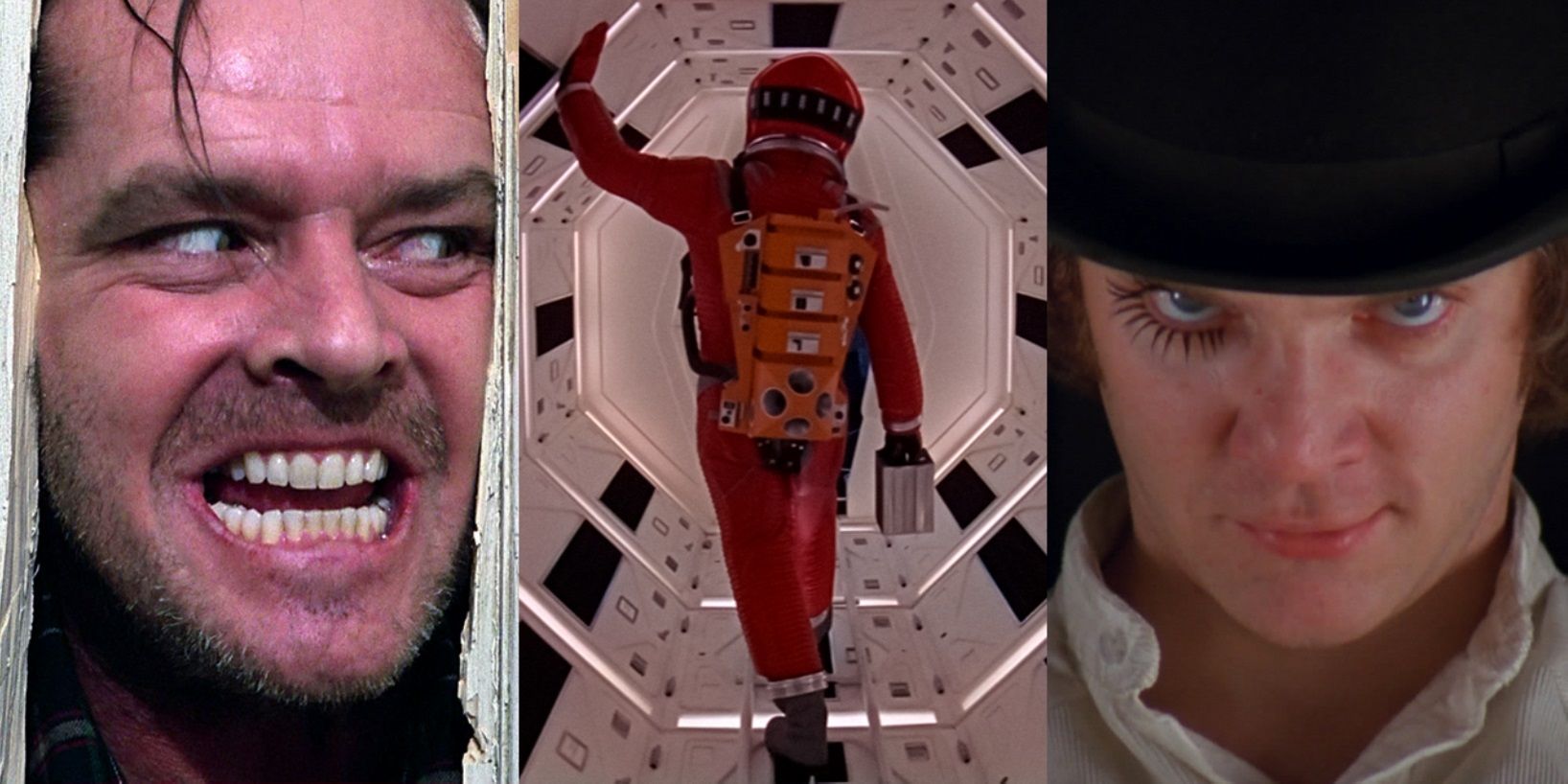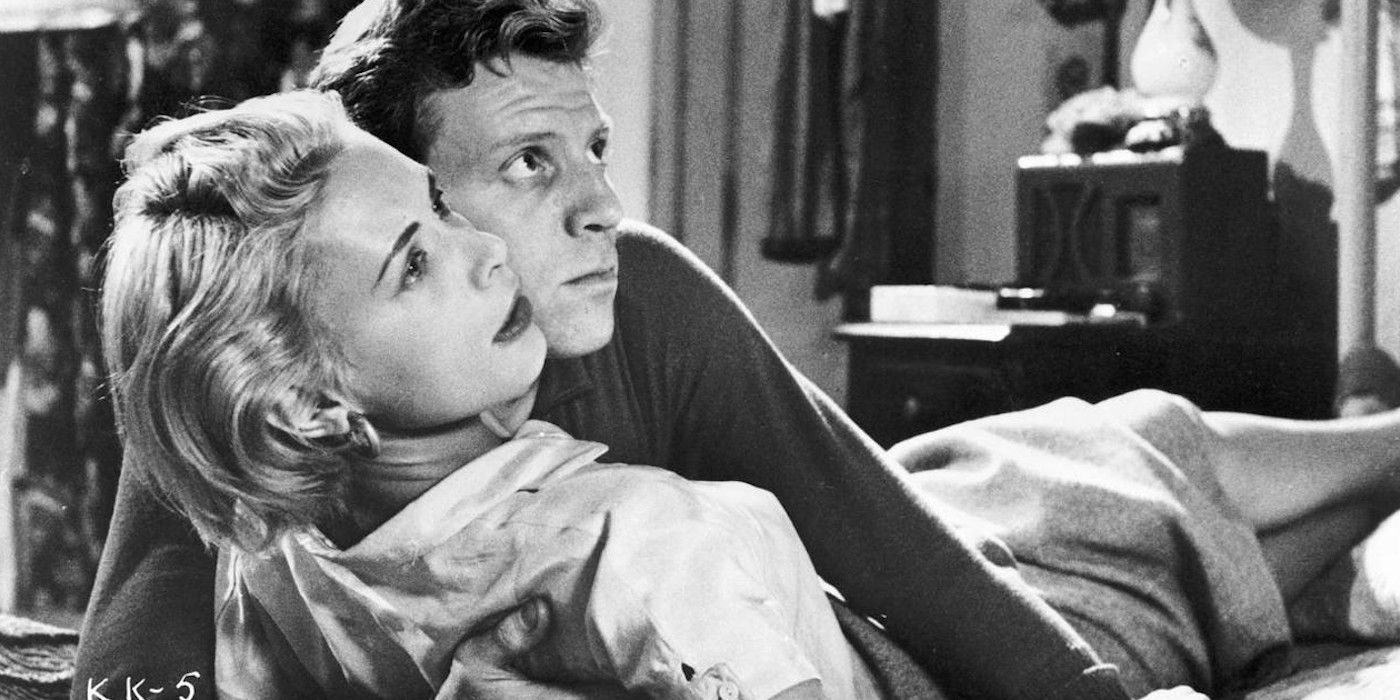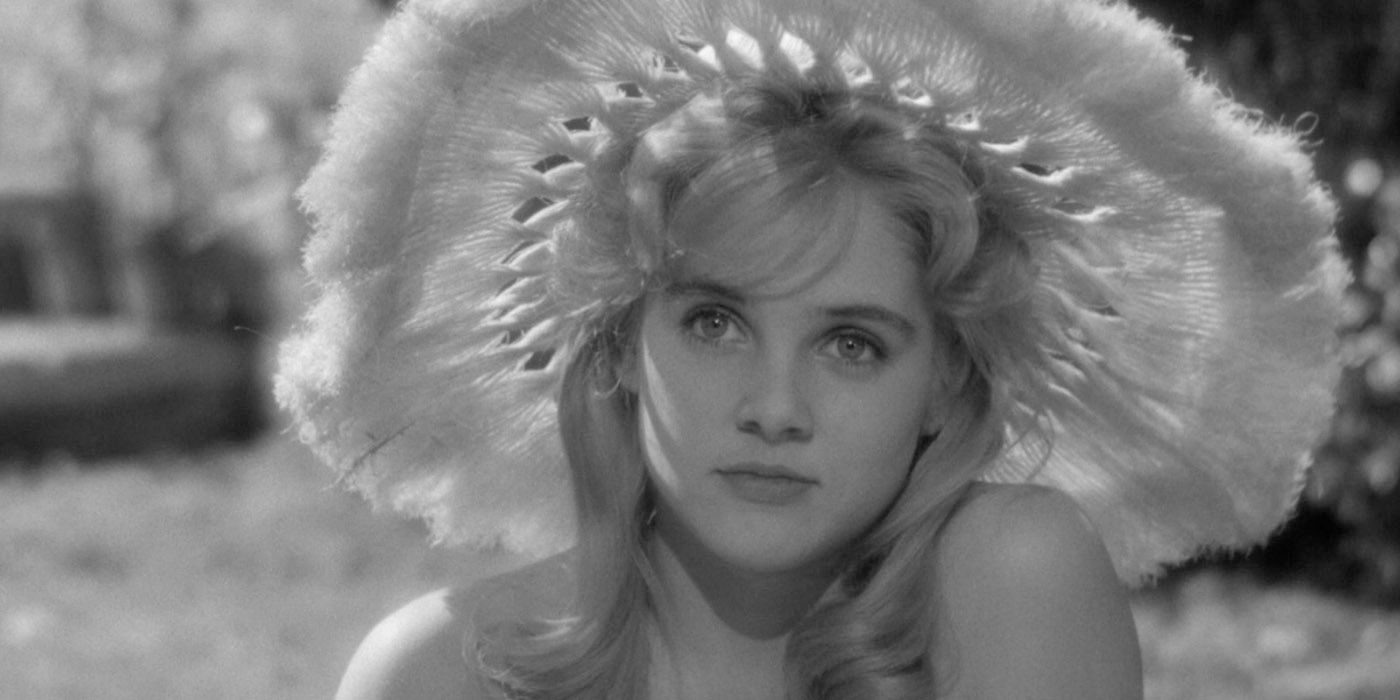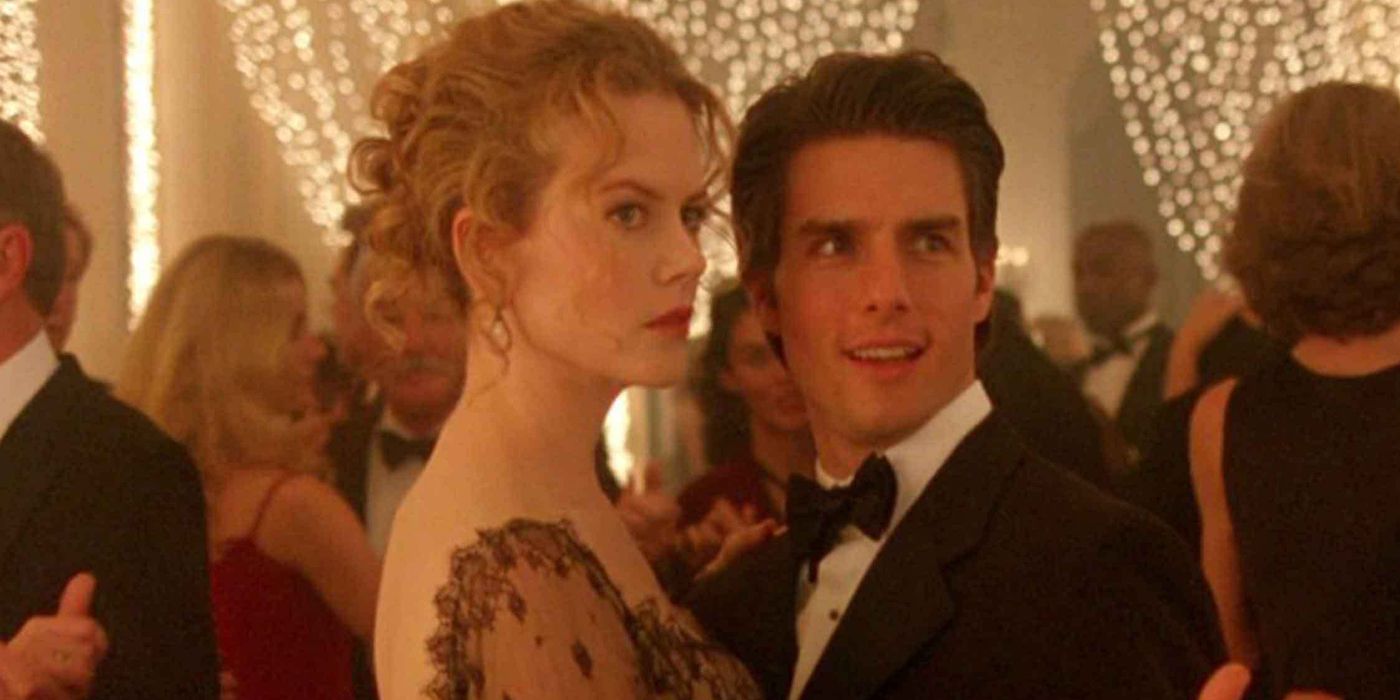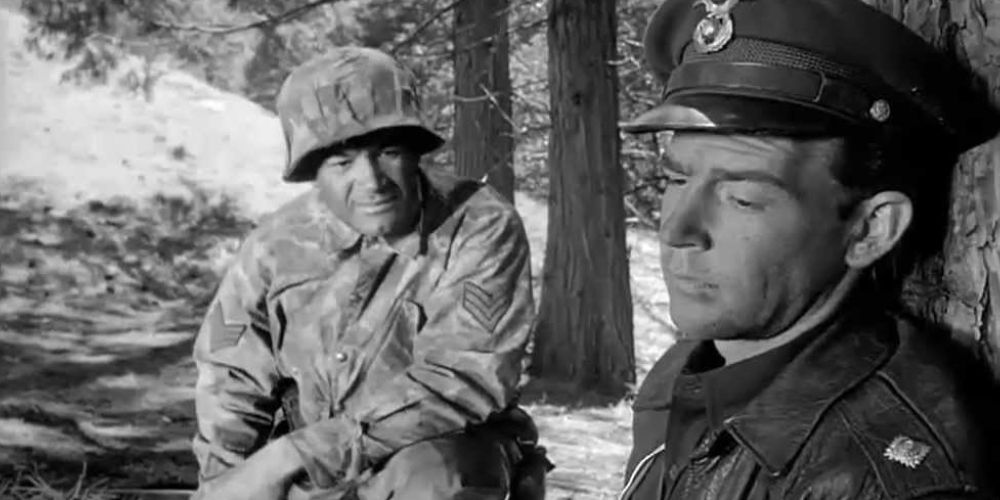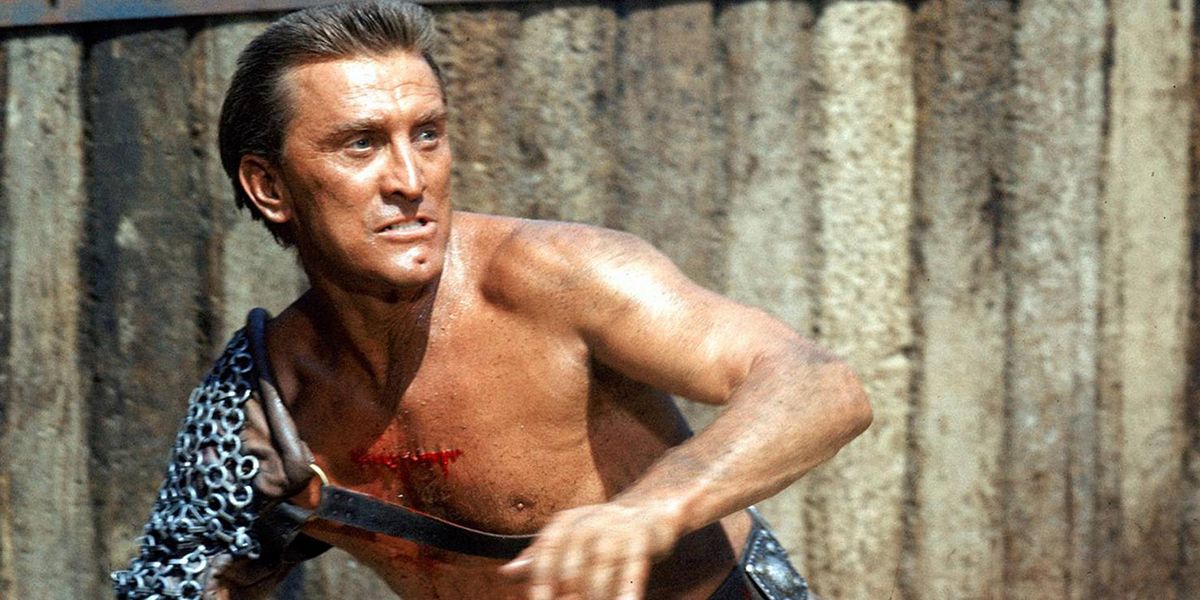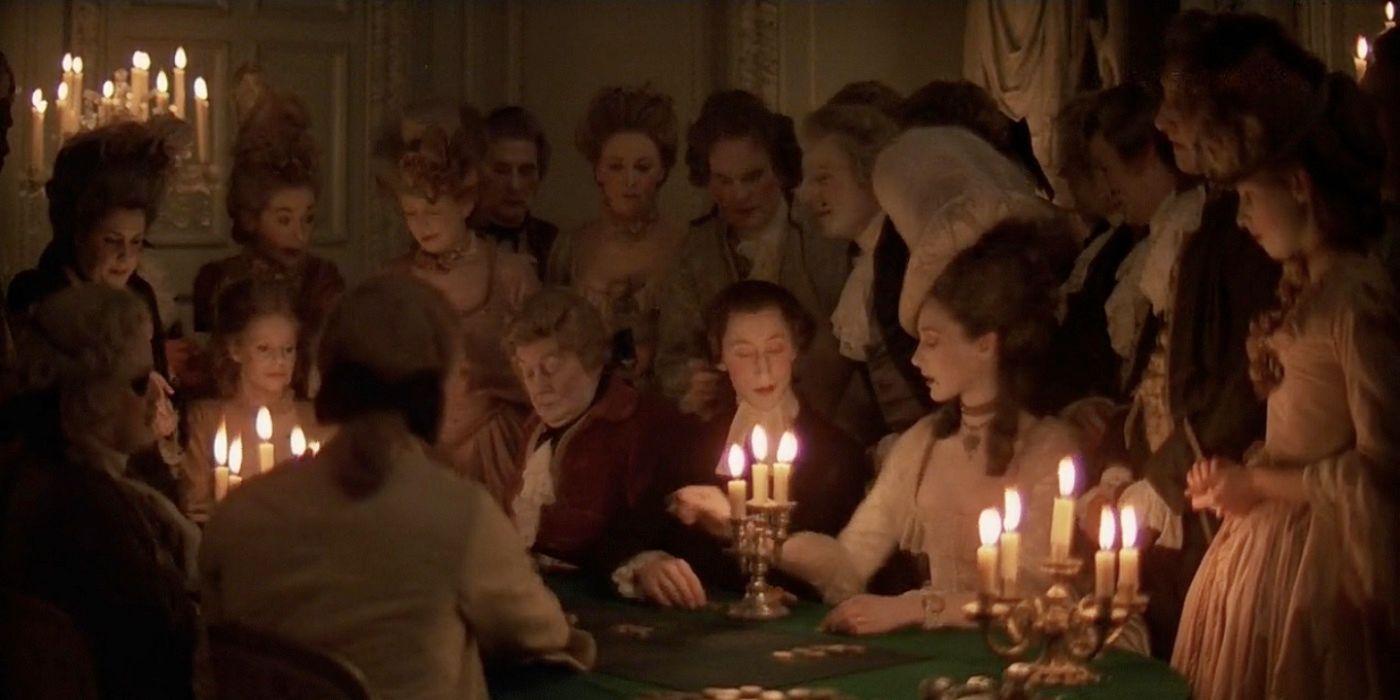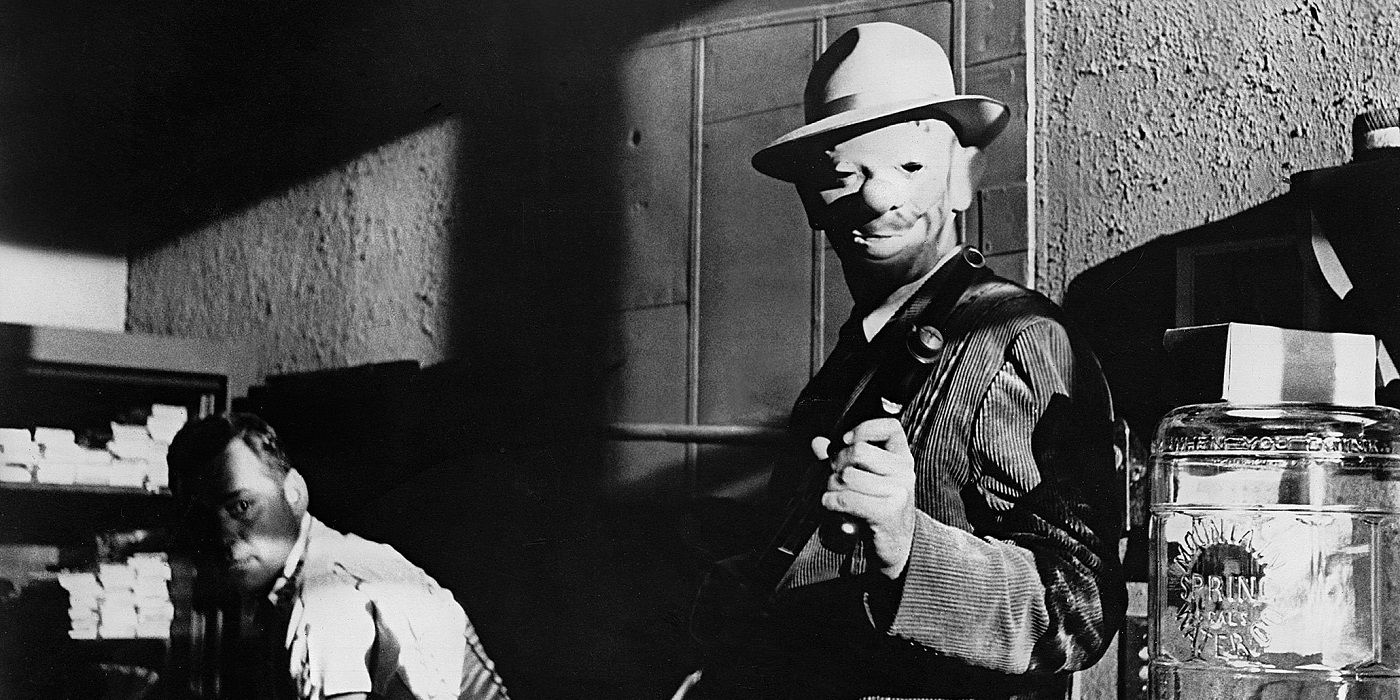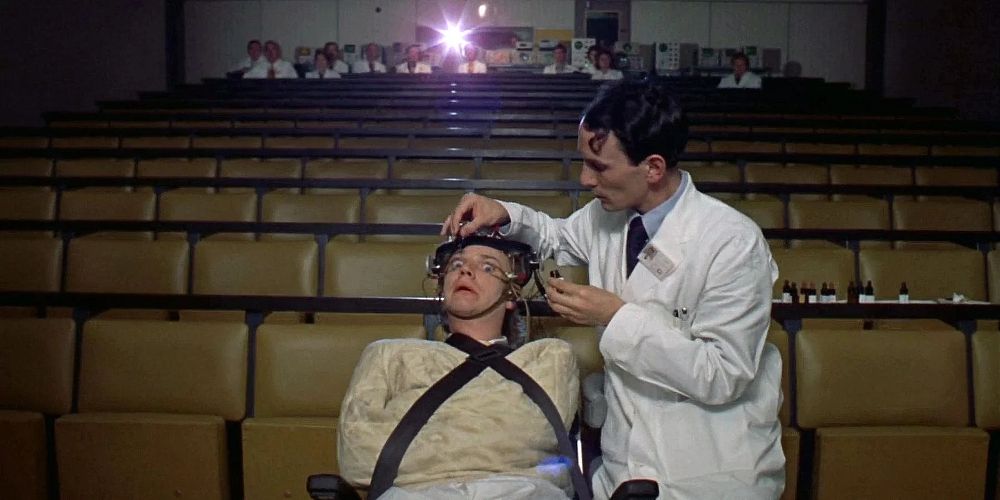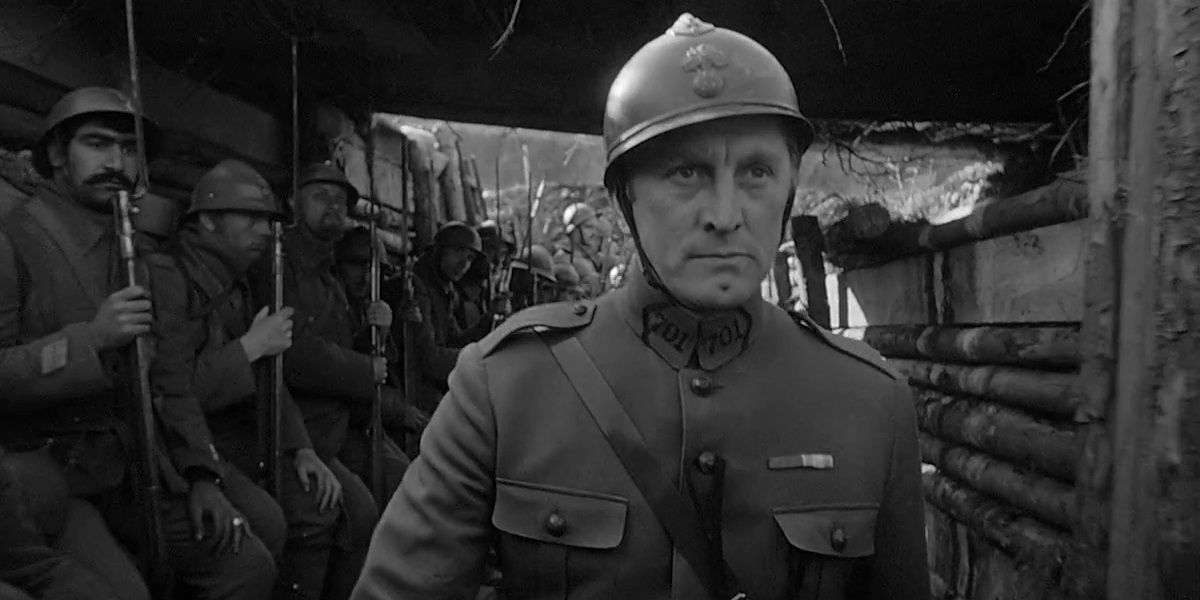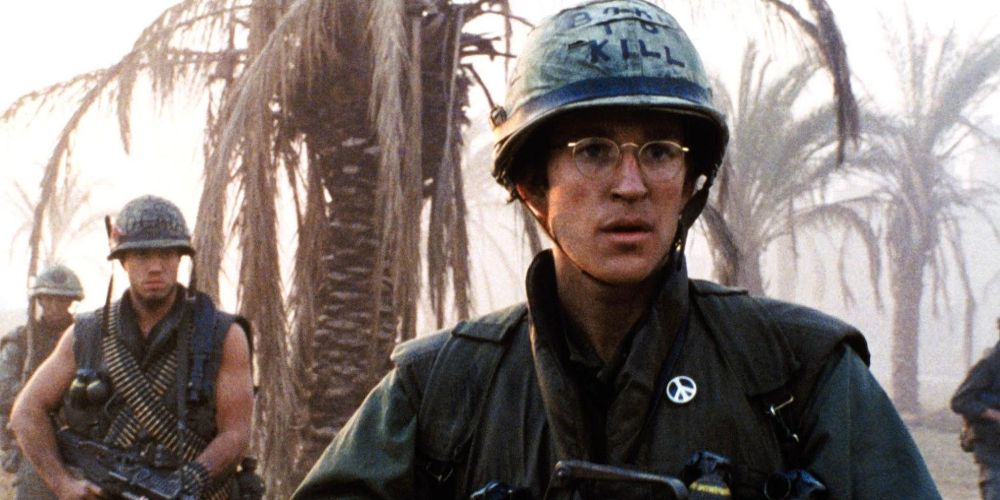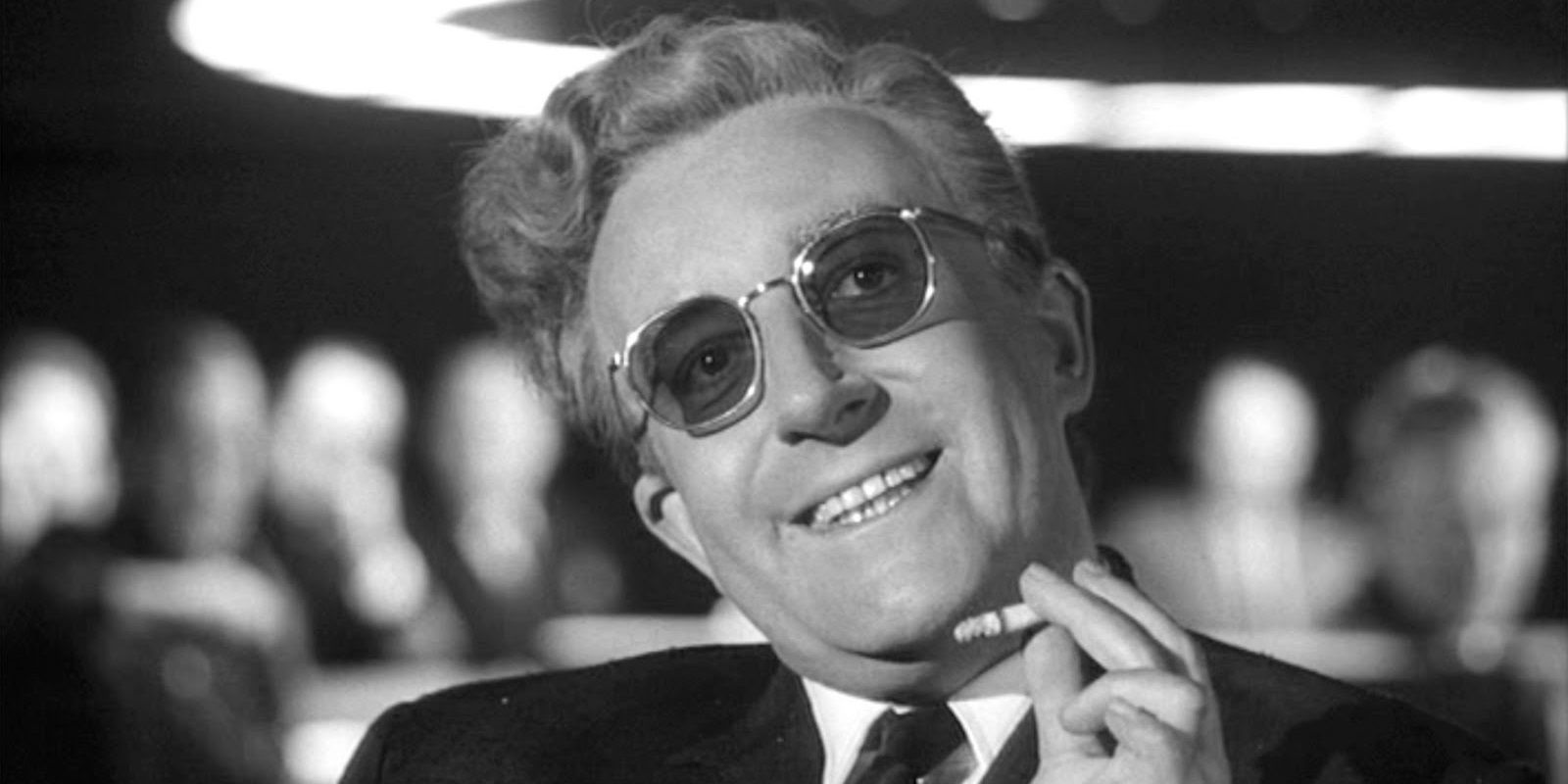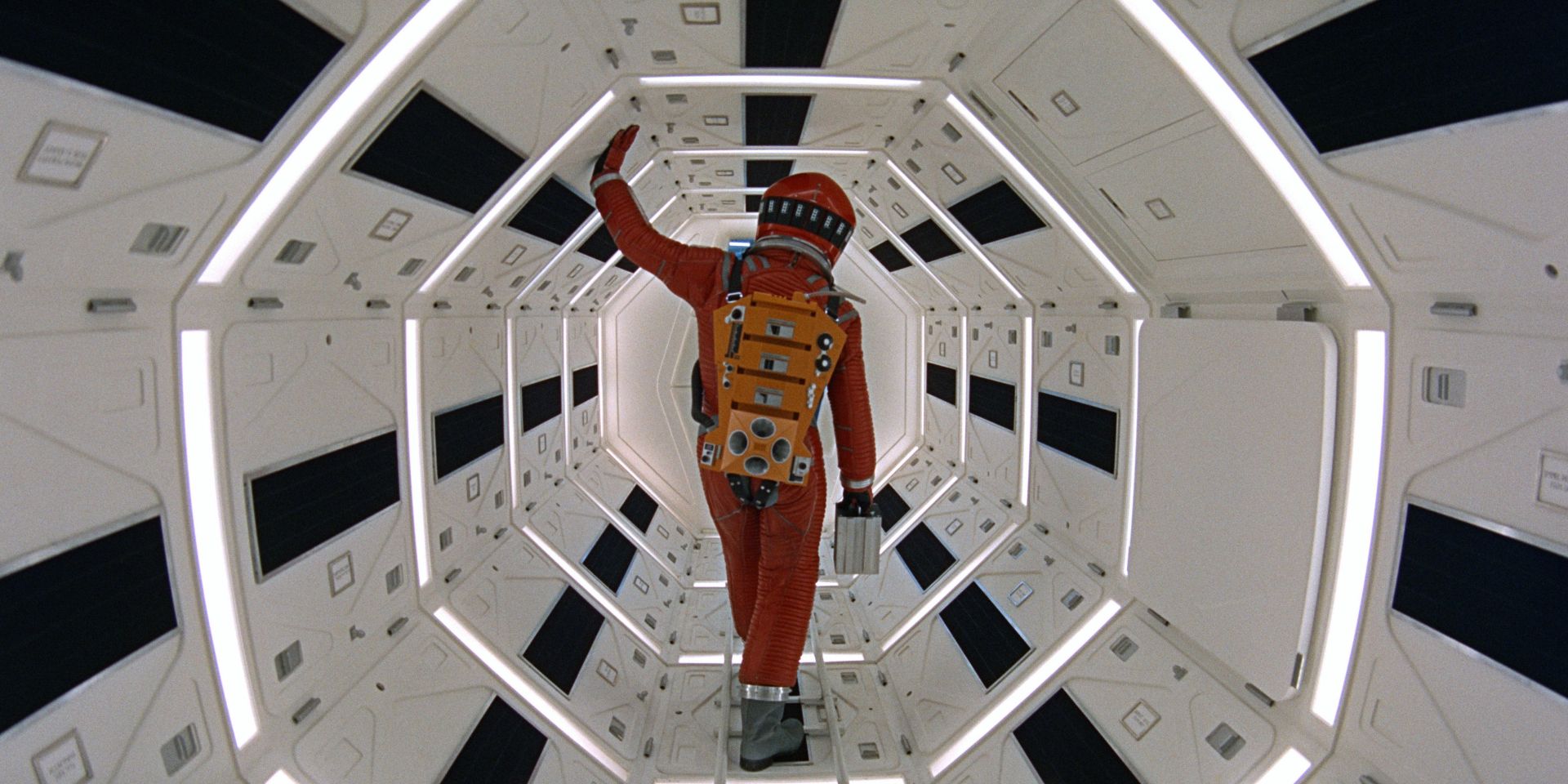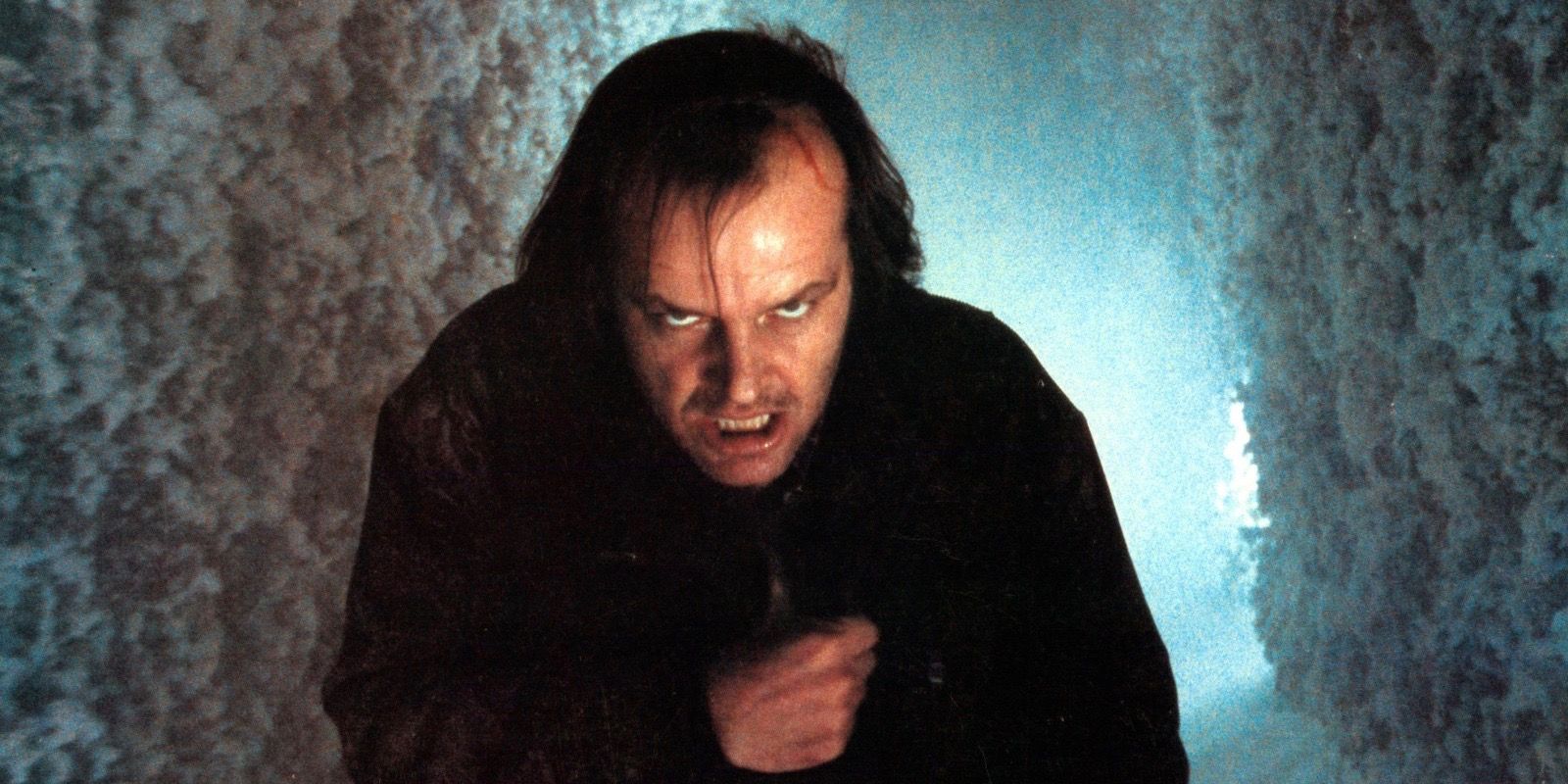Stanley Kubrick is one of the most prolific and legendary directors of all time. From 2001: A Space Odyssey to Dr. Strangelove to A Clockwork Orange to The Shining, almost all of Kubrick’s movies are cinematic monuments that have been hugely influential on the filmmakers that followed. Kubrick packed his movies with so many details – not to mention ambiguous meanings that are open to endless interpretation – that they can be revisited over and over again.
But some of Kubrick’s films, like his darkly comedic Vietnam War epic Full Metal Jacket, demand more rewatches than others, like his erotic psychological thriller Eyes Wide Shut.
Killer’s Kiss (1955)
Kubrick’s second film, Killer’s Kiss, is arguably the most conventional film of his career. Its story of a boxer finding love follows the rigidly defined tropes and clichés of the film noir.
The strikingly gloomy cinematography, capturing the seedy underbelly of New York City, makes up for the script’s shortcomings. But on the whole, Killer’s Kiss doesn’t demand as many viewings as Kubrick’s other movies.
Lolita (1962)
The poster tagline for Lolita read, “How did they ever make a movie of Lolita?” Kubrick flew in the face of restrictive censors to bring Vladimir Nabokov’s wildly controversial novel to the screen.
While it’s a perfectly well-made movie, the uncomfortable subject matter of Lolita makes it less rewatchable than some of Kubrick’s other movies. The story of a grown man falling for a young girl is even more troubling than the story of a frustrated writer trying to murder his family.
Eyes Wide Shut (1999)
Kubrick’s final film, Eyes Wide Shut, was less acclaimed than his other works. After learning that his wife considered having an affair, Dr. Bill Harford goes on a night-long odyssey that leads him to the ceremonial masked orgy of a secret society.
Thanks to its bloated 159-minute runtime, Eyes Wide Shut doesn’t hold up to many rewatches. A lengthy runtime is fine for a movie that covers the whole of human history, but not a movie about an underground sex cult.
Fear And Desire (1953)
Kubrick’s debut feature, Fear and Desire, is difficult to get a hold of because the director tried to pull it out of circulation. But Kubrick held himself to too high of a standard – his first movie is great. The 62-minute runtime is a breeze compared to Kubrick’s two-and-a-half-hour epics.
Fear and Desire introduced the anti-war theme that would appear in several of Kubrick’s later films. The movie was produced at the height of the Korean War, but it’s not about any specific war. It follows four soldiers trapped behind enemy lines who are forced to confront their fears and desires.
Spartacus (1960)
Just before Kubrick had the freedom to develop his own projects and still worked as a director-for-hire, he helmed one of the most beloved swords-and-sandals epics of all time: 1960’s Spartacus.
The movie draws an interesting parallel between its historical source material and the contemporary climate of McCarthyism (cemented by the involvement of blacklisted screenwriter Dalton Trumbo).
Barry Lyndon (1975)
One of Kubrick’s most underappreciated movies, the dryly comical historical epic Barry Lyndon, is also one of his slowest-paced movies (which might explain why it didn’t catch on like his other films).
The real star of Barry Lyndon is the cinematography. The phrase “every frame a painting” is overused, but in Barry Lyndon, every frame is literally lit and composed like an oil painting from the era in which it’s set.
The Killing (1956)
The director’s third feature, The Killing, is the movie where Kubrick became Kubrick. With its unconventional storytelling and unique take on genre archetypes, The Killing was Reservoir Dogs before there was Reservoir Dogs.
There’s no limit to the number of times a viewer can watch this cinematic gem. The Killing is a masterfully crafted noir about a heist gone awry, full of subversive twists and turns.
A Clockwork Orange (1971)
Kubrick’s adaptation of A Clockwork Orange warrants fewer rewatches than some of his other movies because it’s one of his most harrowing works. Scenes like the home invasion and the Ludovico Technique are difficult to watch. But it’s also one of Kubrick’s most stunningly well-crafted movies, so it still demands many viewings.
Kubrick brings Anthony Burgess’ disturbing vision of a dystopian near-future to life in unforgettable fashion. Malcolm McDowell’s unapologetically sociopathic yet hauntingly charismatic performance as Alex DeLarge is infinitely watchable.
Paths Of Glory (1957)
François Truffaut famously said that it’s impossible to make an anti-war film, but Kubrick came pretty darn close with his 1957 masterpiece Paths of Glory. The movie is more rewatchable than most, because its script is perfectly crafted and it wraps up its story in a nice, neat 88-minute runtime.
Anchored by one of the finest performances of Kirk Douglas’ career as a commanding officer who has to defend the decision to save his troops from embarking on a suicide mission, Paths of Glory is a quintessential portrait of a noble individual standing up to a corrupt institution.
Full Metal Jacket (1987)
Kubrick’s better-late-than-never cinematic response to the Vietnam War, 1987’s Full Metal Jacket, is split into two halves that are both equally compelling for different reasons.
The first half, set at boot camp, has former U.S. Marine drill instructor R. Lee Ermey’s phenomenal turn as Gunnery Sergeant Hartman. The second half, set in a warzone, has Kubrick’s uncompromising, darkly comedic, starkly minimalist take on the Vietnam War.
Dr. Strangelove (1964)
Arguably the greatest political satire movie ever made, Dr. Strangelove is laugh-out-loud hilarious with a poignant message to back it up. Despite its contemporary themes, the movie still holds up today.
When it hit theaters in 1964, Dr. Strangelove was a timely indictment of the then-ongoing Cold War. In the decades since, it’s remained just as relevant as a timeless, nihilistic study of mutually assured destruction. Plus, it doesn’t hurt that the movie has not one, not two, but three hilarious performances by the great Peter Sellers.
2001: A Space Odyssey (1968)
Kubrick’s groundbreaking magnum opus 2001: A Space Odyssey can be enjoyed over and over again, because its visuals are stunning and its meaning is open to interpretation. 2001 encompasses the entirety of human history, starting with apes evolving into humans when they discover the ability to solve their problems with violence and ending with the next stage of humanity’s evolution: the birth of the “Star Child.”
Its pace is slow-moving (the movie opens on a lengthy classical composition being played over a black screen), but it’s worth it. 2001 is one of the most deeply immersive movies ever made. It makes the audience feel like they’re actually floating through outer space.
The Shining (1980)
Kubrick’s shamelessly unfaithful adaptation of Stephen King’s The Shining is one of the most iconic and unnerving horror movies ever made. It’s endlessly rewatchable, because there’s so much to unpack. The most unsettling thing in The Shining isn’t a tidal wave of blood gushing out of an elevator or two creepy twins appearing at the end of a hallway; it’s the ambiguity.
It doesn’t matter how many times a given viewer watches The Shining; they’ll never be able to fully decipher the mystery. That mystery has kept audiences coming back for decades, pumping out enough fan theories to fill a feature-length documentary.

